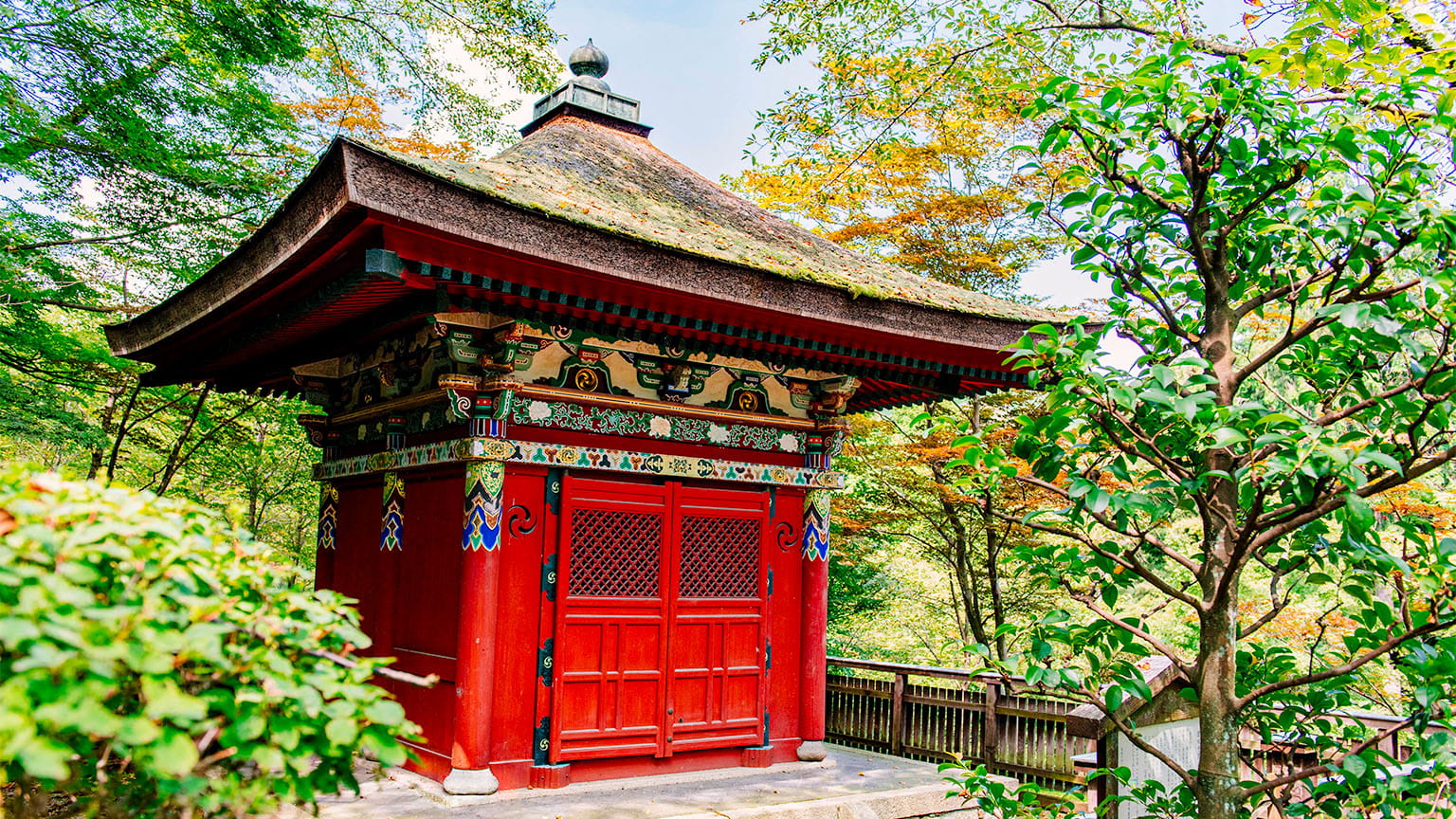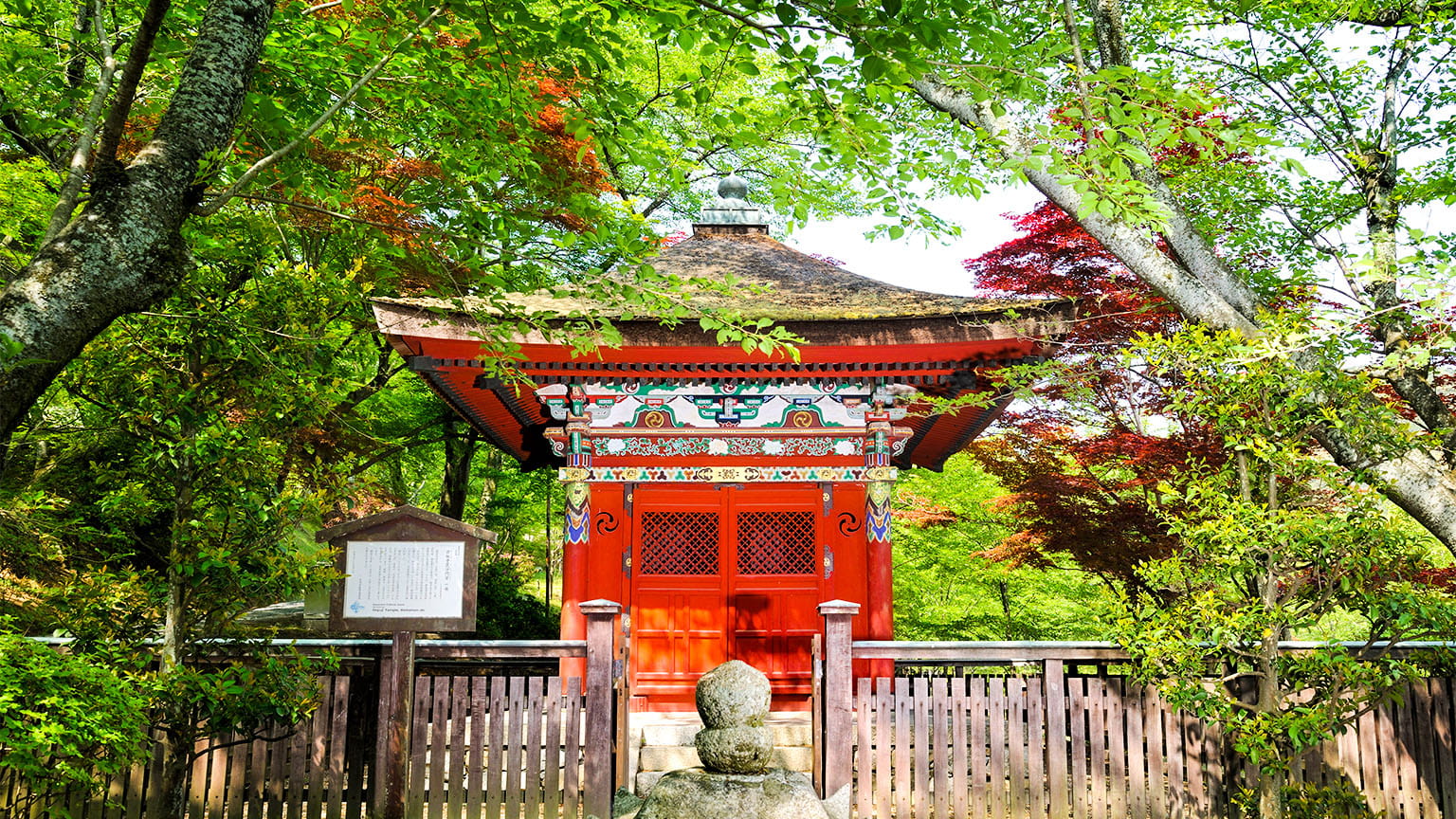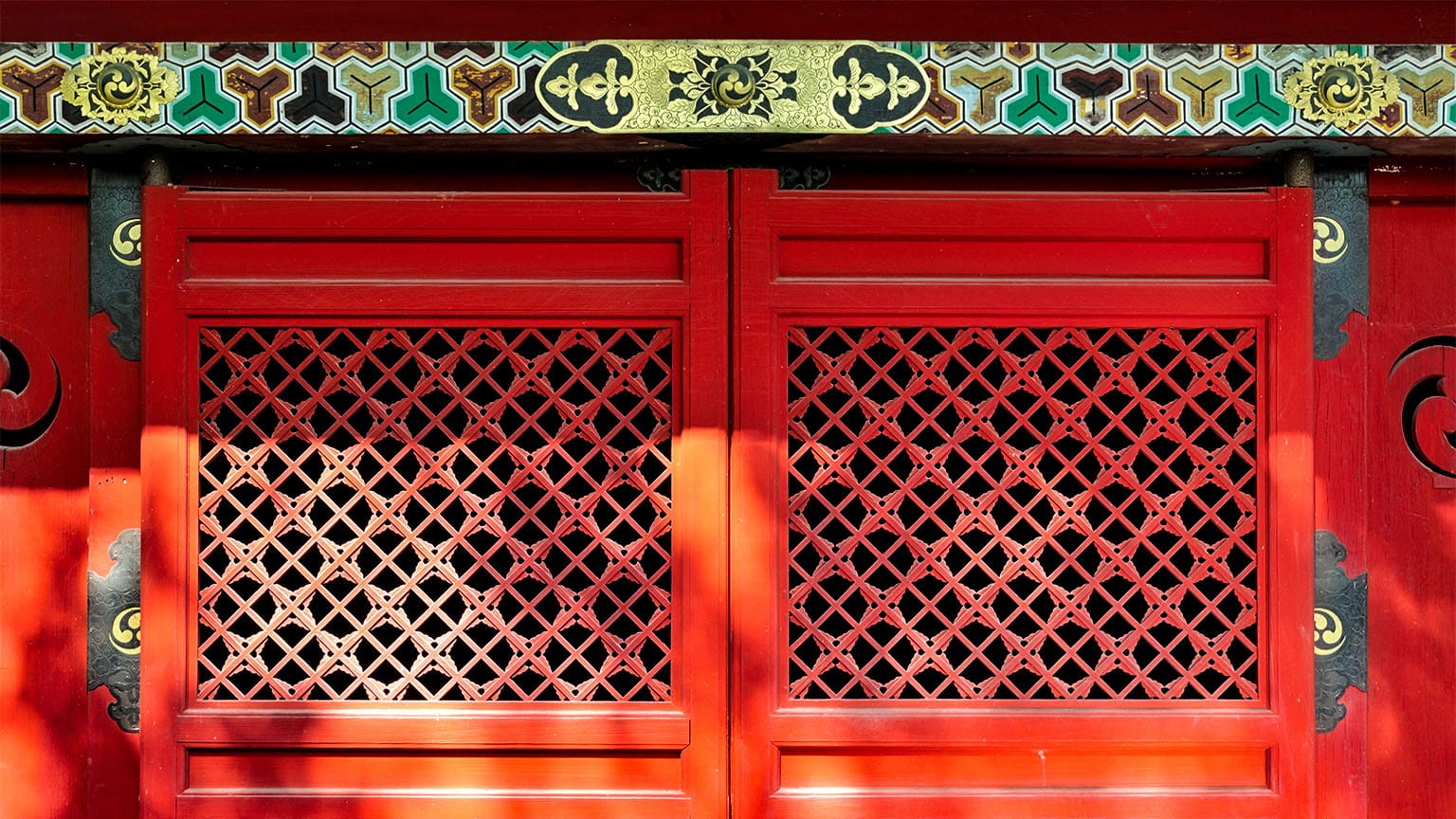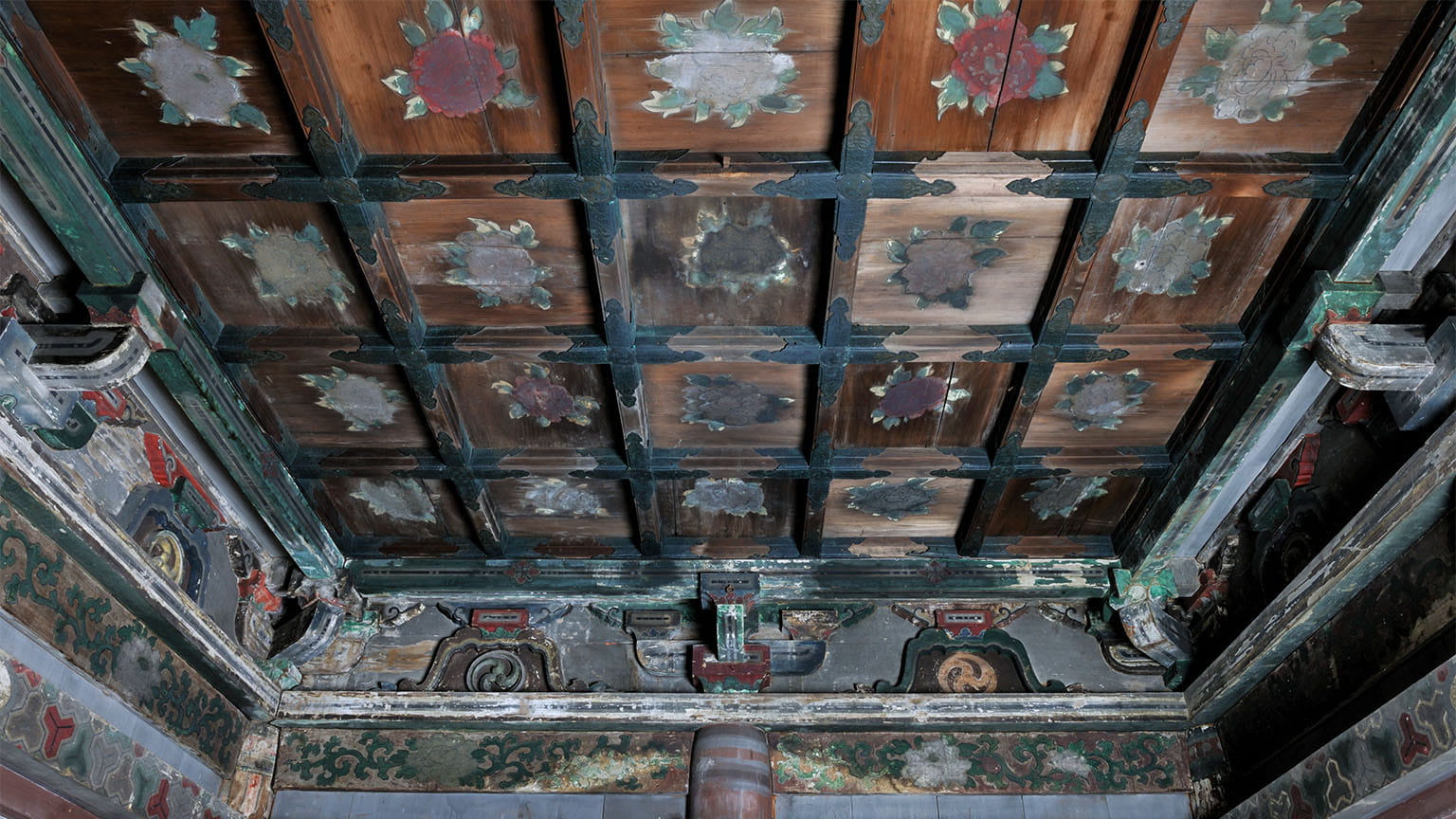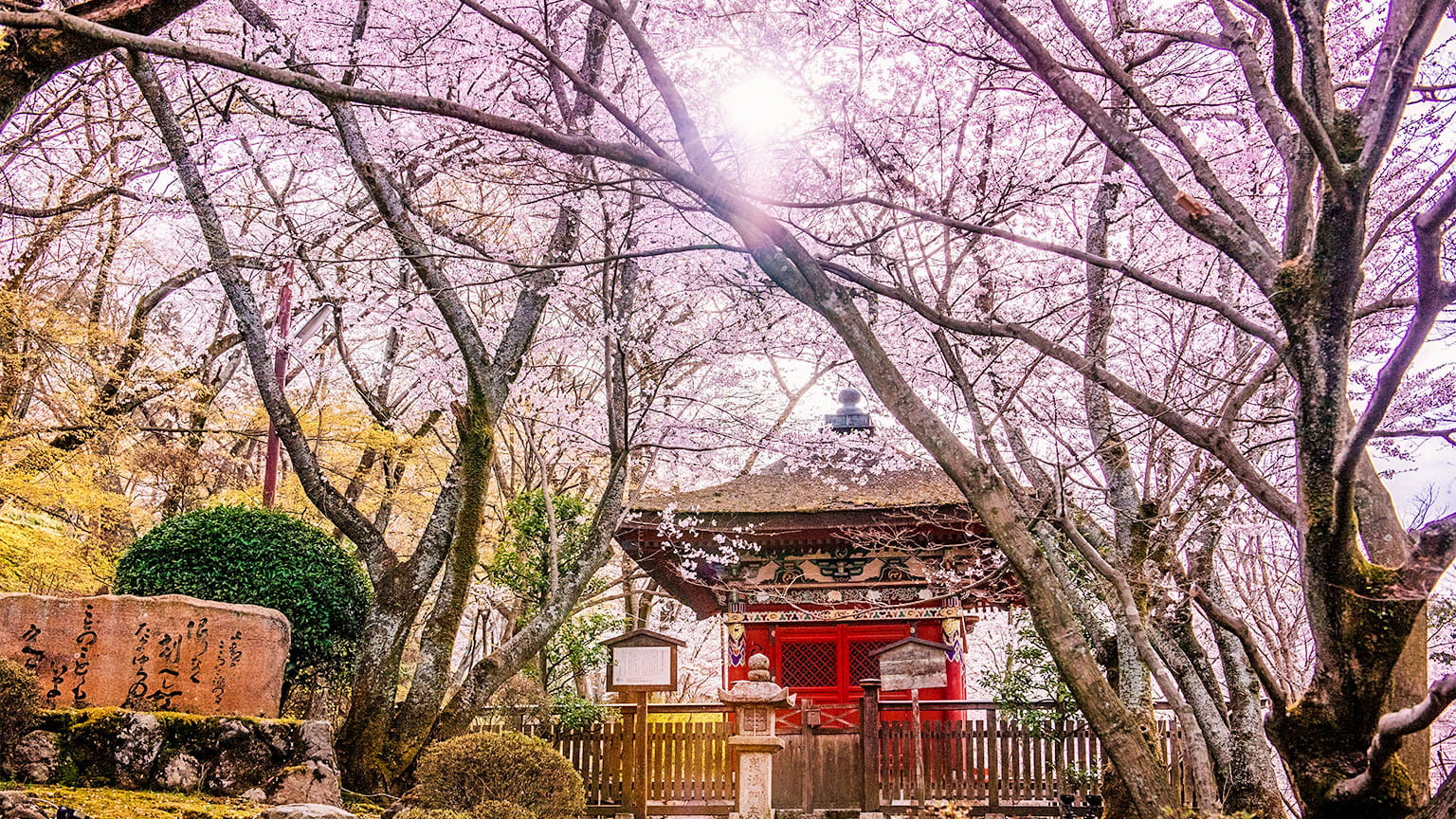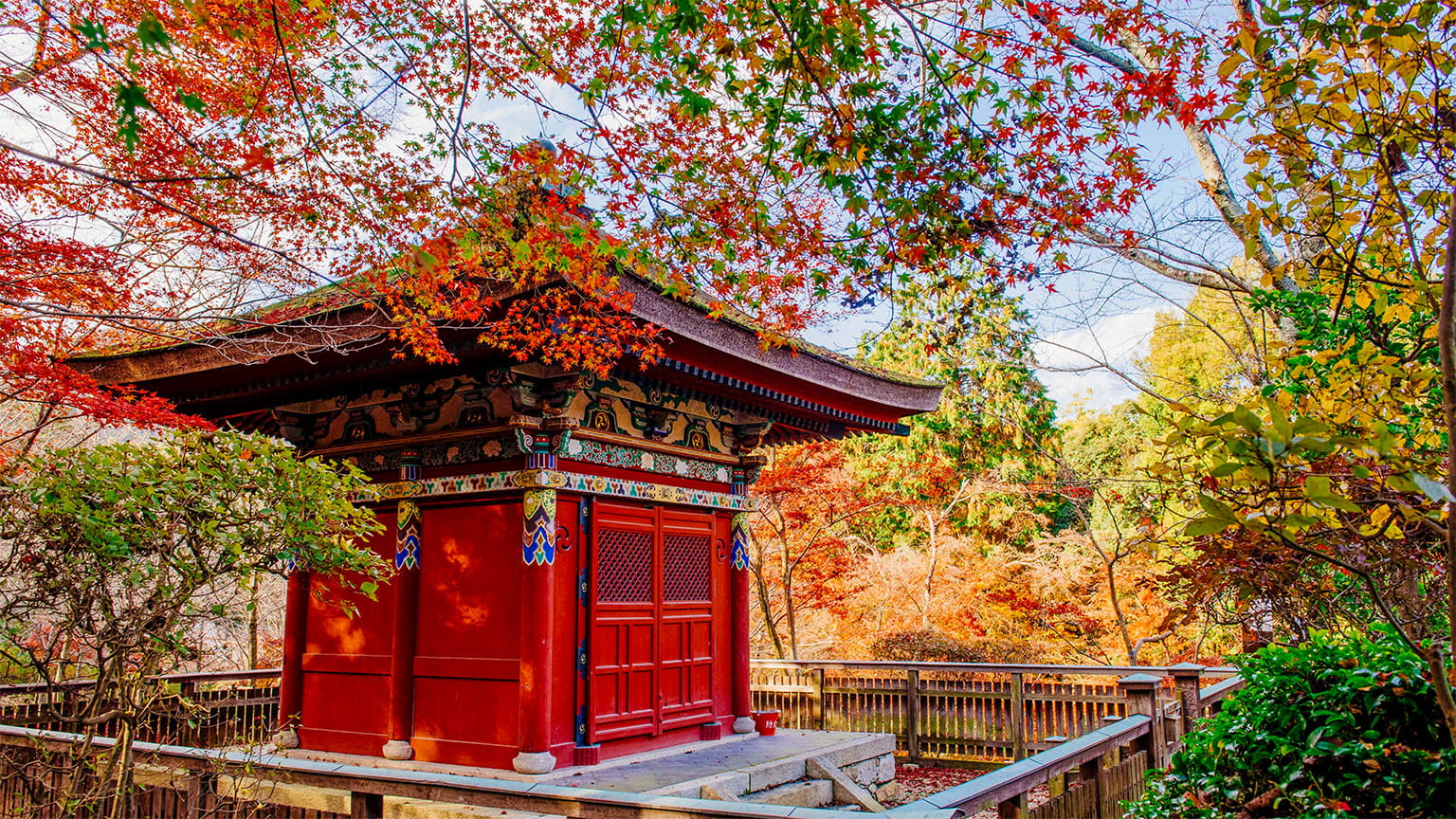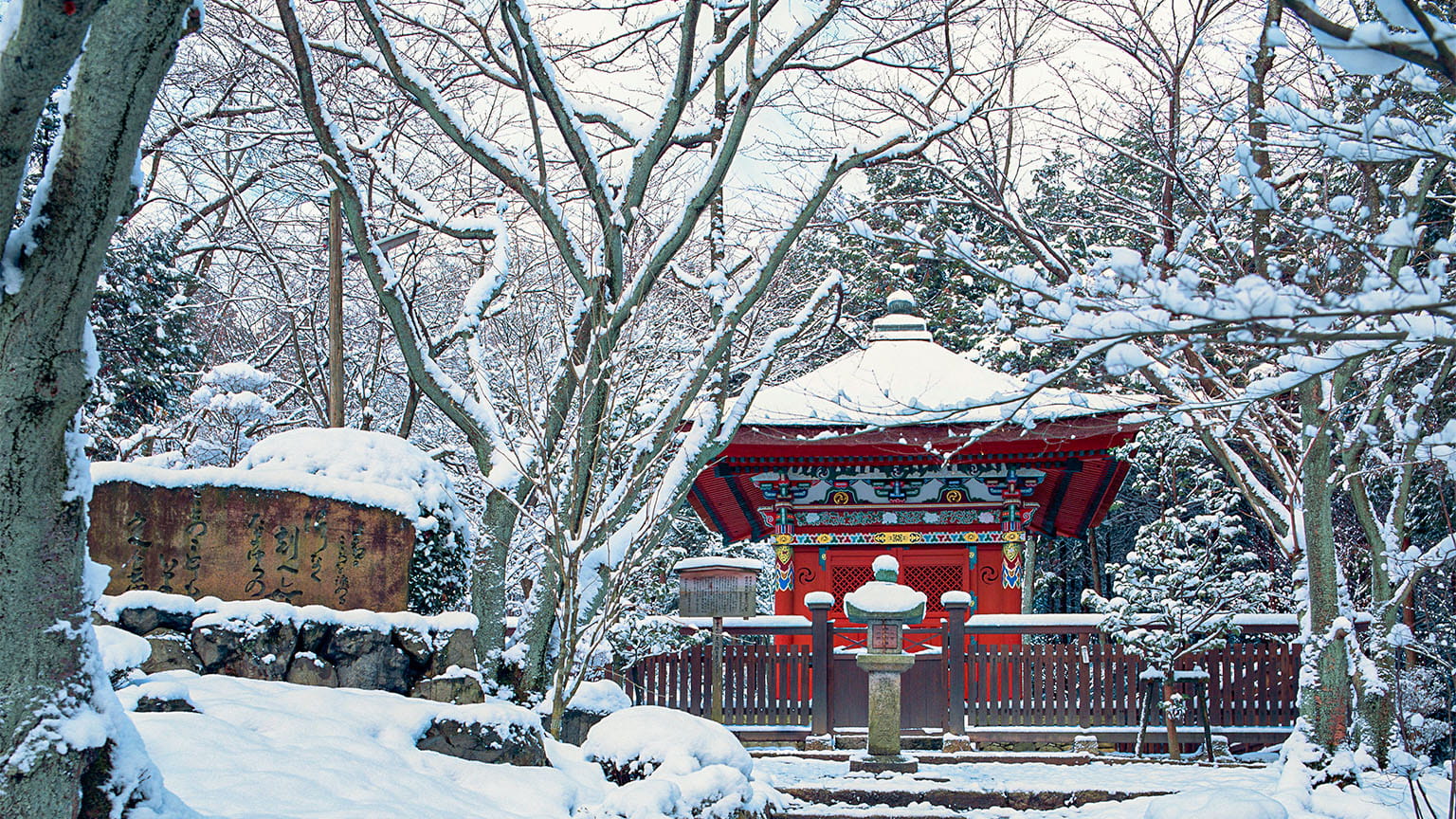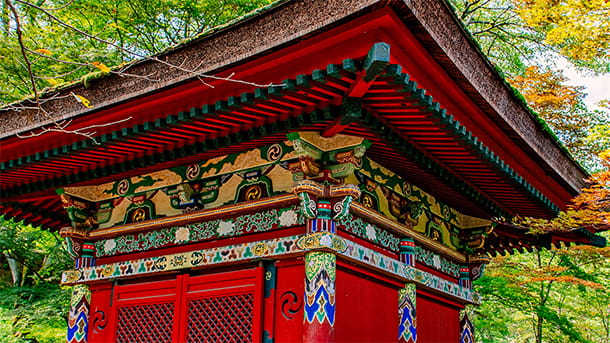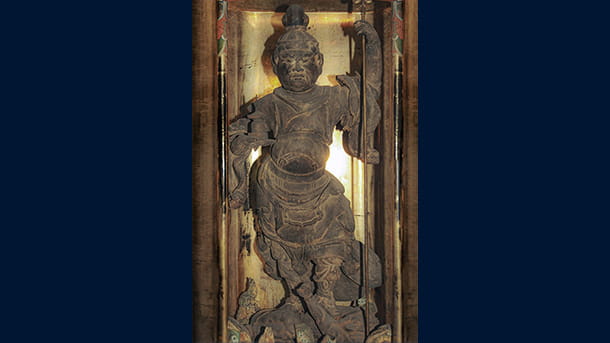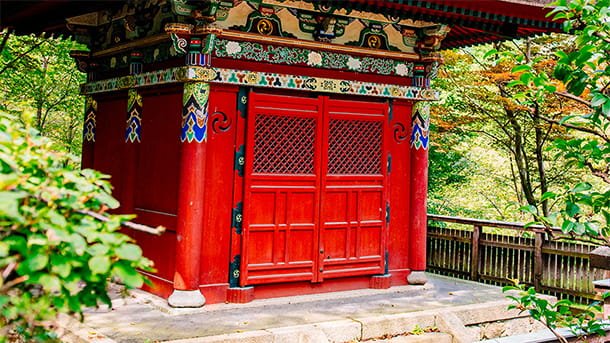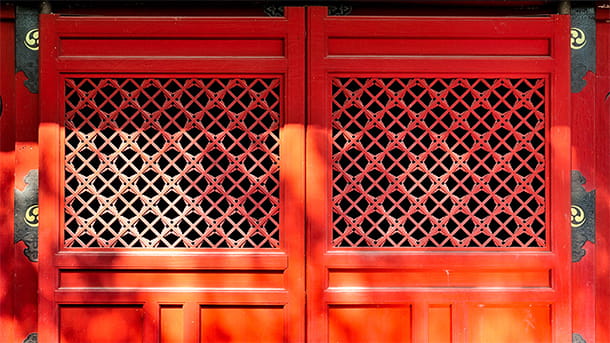“five branches of Miidera Temple”
The branches of Miidera Temple were built around the main temple for the purpose of relieving as many people as possible from the Heian period onward. The five branches consist of Gonshoji, Bimyoji, Bizoji, Suikanji and Jozaiji Temples, and are called gobessho.
Originally, bessho (branch temple) used to be a religious facility located in a consecrated place far from the original venue under the protection of a large temple. It was also the place for recluses (people secluded from the world), as well as saints and mountain priests who traveled around the country to gather.
“Bizoji Temple”
One of the five branches of Miidera Temple. It was reportedly founded by Keiso Ajari (instructor) (955–1019) of Miidera Temple in the Heian period (794–1185), and he enshrined the eleven-faced Kannon statue as the principle image. The statue used to be enshrined in Shigadera Temple that had a connection to Emperor Tenji. Worshippers who wanted divine help inundated the temple in the Edo period (1603–1868), and it became so crowded that worshippers’ hats came off; therefore, the Kannon was called “Kasanuge no Kannon” (kasa means a hat and nuge means coming off) and attracted more worshippers. The statue is currently designated as an Important Cultural Property and is displayed at the Miidera Temple Cultural Property Storehouse. Bizoji’s temple building was demolished in the Meiji era (1868–1912), and its land was developed as Nagara Park by Otsu City. The Otsu City Nagara Crafts Pavilion / Mitsuhashi Setsuko Museum opened in 1995 and attracts citizens as it is a park with an abundance of nature in the vicinity of the city center.
“Zen style of architecture”
An architectural style that was brought by Zen sect monks from China in the beginning of the Kamakura period. It is also called karayo.
“kumimono”
It is mainly located on top of a pillar. Its structure is interlocked bearing blocks and bracket arms to support an eave purlin that supports rafters. Also called tokyō or masugumi.
“Bishamonten”
One of the Four Heavenly Kings and also one of the twelve devas. It is said that he lives halfway down the north of Mount Sumeru and protects the northern direction with Yaksha and Rakshasa. He is also reportedly the deity who protects treasures. He is portrayed as a furious armor-clad warlord holding a pagoda in one hand and a spear or treasure club in the other. One of the Seven Deities of Good Fortune in Japan. He is also called Tamonten, and this name is normally used to enumerate the Four Heavenly Kings. There is also another name for him, Kubira (Kubera in Sanskrit), who is the lord of riches in Hindu mythology.
“sankarato”
A paneled door with thin panels and renji latticework set into small frames in an outer door frame.
“hanazama”
It is a Zen style and is mostly used for sankarato paneled wooden doors and ramma transoms of a drawing room or study. It is also called hanaramma (hana means flower in Japanese), as floral patterns were applied to kumiko work (a delicate thin wooden work) on lattices. These kumiko works are called hanakumiko or hanako.
“Momoyama period”
One of the classifications of periods. Approximately 20 years of the period while Toyotomi Hideyoshi took power in the late 16th century. For art history, between the Azuchi-Momoyama period and the early Edo period is important as a transition period between medieval Japan and early modern times. In particular, constructions of magnificent castles, palaces, temples, and shrines, as well as decorative paintings on paper sliding doors and screens inside those buildings were developed. Also, the development of genre-paintings that show ordinary life and craft technology such as pottery, lacquer work, dyeing and weaving is remarkable.


